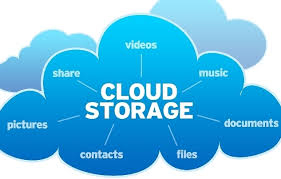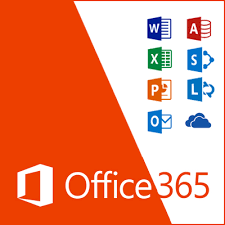
 Data Structure
Data Structure Networking
Networking RDBMS
RDBMS Operating System
Operating System Java
Java MS Excel
MS Excel iOS
iOS HTML
HTML CSS
CSS Android
Android Python
Python C Programming
C Programming C++
C++ C#
C# MongoDB
MongoDB MySQL
MySQL Javascript
Javascript PHP
PHP
- Selected Reading
- UPSC IAS Exams Notes
- Developer's Best Practices
- Questions and Answers
- Effective Resume Writing
- HR Interview Questions
- Computer Glossary
- Who is Who
Know Cloud Ports and Protocols Infra Perspective!
It looks like Cloud computing has reached a saturation point in Information technology, which has started its next phase. Cloud played a crucial role in the Infrastructure of sector, which had changed the way in which service has been delivered to the customers.
It had certainly enhanced the delivery model by making the process of maintenance much simpler. Companies were able to see the impact of cloud in infrastructure in multiple ways such as cost of delivery, Way of delivery and maintenance. This has made companies to fix the knowledge of cloud as mandatory for all the employees who are in the infrastructure madam. This article will give an overall view about the Cloud protocols and port numbers which are required for the cloud service in the infrastructure perspective. This will help the infra employees to know more about the port numbers which are to be opened before deploying the cloud and while working with cloud.
Infrastructure Overview!
Basically, the term infrastructure has come from the related hardware components of a computer system. In IT sector, this department delivers and maintains the applications which are hosted on those servers. It ensures proper and continuous delivery of service to the users. The service that has been hosted from an organization is termed as On-premise service and the service which are hosted in the client end is termed as target service. In reality, most of the organizations will provide hybrid service to the clients. Important service will be the target platforms and less important services will be in the On-premise environment.

Cloud has changed this traditional way of service, by delivering the services over Internet. All the services have been hosted in the network of network and which can be accessed from anywhere at anytime. This way of delivering the service to users is completely different from the traditional way with the respect to the infrastructure. In-depth idea on the infrastructure aspect of cloud services will help the system administrators and infra developers.
Know about Your Storage!!
Cloud storage is one of the most important services, which offers both structured storage and unstructured storage. Structured storage indicates the data stored in the database, which is of same data type. Unstructured storage indicates the storage of data which doesn’t have common data type. Storage and retrieval of structured storage is much easier than the unstructured storage. Cloud storage falls under unstructured storage. NFS is the basic protocol of unstructured cloud storage.

Network File System protocol allows the users to store and retrieve files via Port number 111 and 2049, which are essentially to be opened. SFTP – SSH File Transfer protocol is another common transport layer protocol used in the cloud storage. SSH protocol is generally a UNIX based protocol which will allow the users to transfer the files securely via the port number 22. The best example for Cloud storage can be Drop Box, Amazon S3 and Google Drive. Local Disk can be transformed as cloud storage by allowing the users to access it via Internet using these ports.
You’re Application, Your Port!
The next important service provided by the Cloud is Software as a Service (SAAS). All the user applications are hosted on the Internet (network of network) and accessed anywhere at any time. This will give the freedom to the user on using an application without downloading to the local machine. One of the most important cloud application services is e-mail. Email services are hosted in the cloud via SMTP protocol, POP3 and IMAP protocol.

Simple mail transfer protocol will allow the user to send and receive mails via the port number 25 without saving the mail to the local machine. POP3 will use the port number 110, but it will save the mail content to local machine. One of the popular Cloud mailing service is Office 365, which will additionally use IMAP protocol. This protocol will use the port number 993 for the communication. SIMPLE is an add-on on the SIP protocol will enable instant messaging in the cloud, which uses the port number 5060.
Another major application that will be required by a user is SQL Server to store and retrieve structured data. SQL Server can be hosted on the cloud and data be transferred via the port number 1433. Each and every application will use a particular port number for its communication to the external environment. Required port numbers to be opened will be specified by that particular application provider. Here the commonly used application’s port number has been shared.
SOAP and The Rest!!
As like the traditional services, Cloud too requires few basic network layer protocols such HTTP, HTTPS and UDP for the communication purpose. Port number 80,443 are the port numbers which are mandatorily required for communication between cloud and external environment. Beyond these protocols and port numbers, SOAP and Rest are the most important protocols for the cloud model as all the services are said to be web services.

Simple Object Access Protocol is now considered as old concept for accessing the data of an application which has been hosted on the web. XML is the file format used by SOAP while accessing the data. Using the SOAP, we will be sending a request to the web services in an xml format and get response in the xml format. Later the XML can be analyzed and used for further transactions. SOAP uses SMTP for the request and response. Rest is the recent protocol which replaces SOAP in accessing the web services. Rest is faster than SOAP, where the output is either a CSV file or JSON.
Having said the above, One should be very careful while opening and using the ports. Continuous port monitoring should be done to ensure the security in the cloud. Unnecessary ports should not be opened in the machine which uses cloud. And unnecessary communication should not be carried via the important ports, which is used by the applications and services. Knowing the purpose of each and every port number and the communication via these ports are very essential while setting up a cloud.

